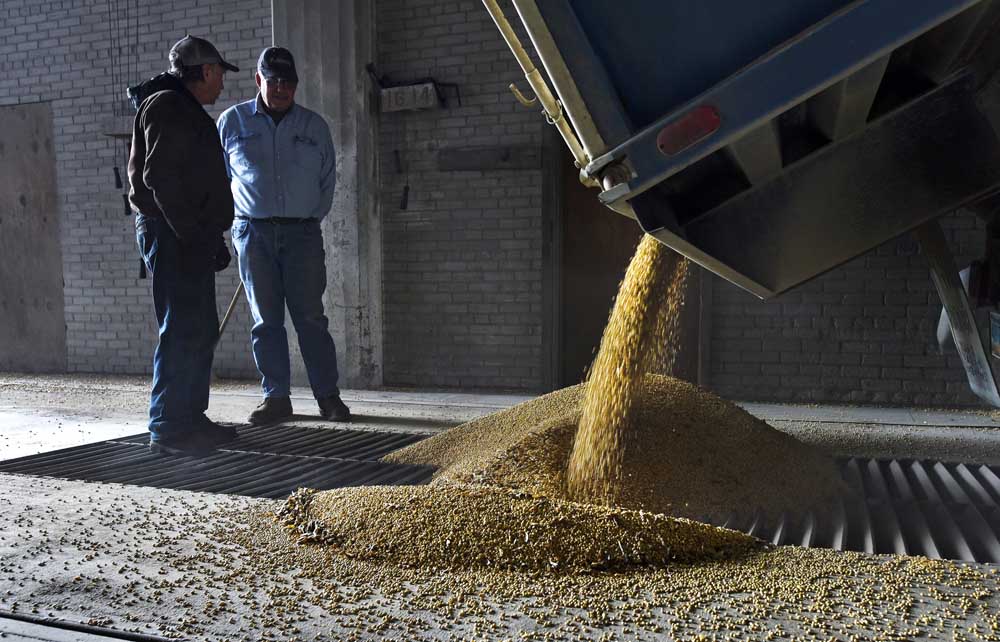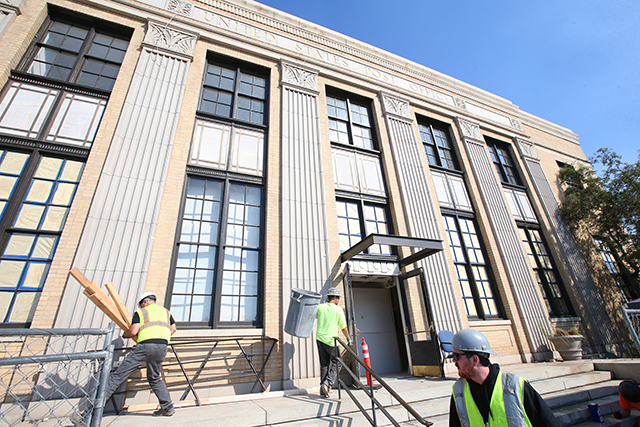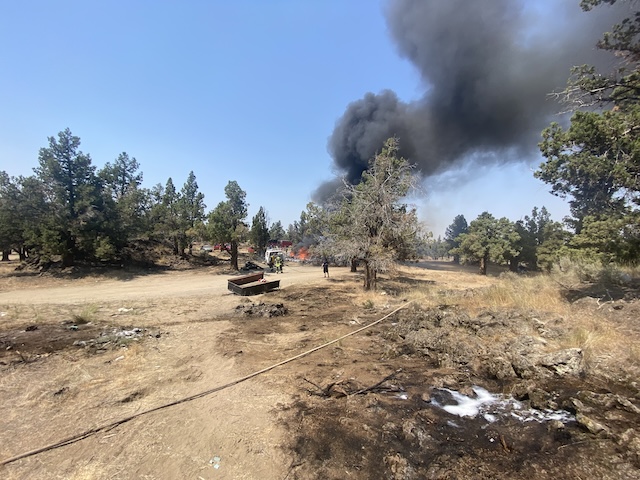As trade war grows, losses, soybeans mount
Published 12:00 am Tuesday, November 6, 2018

- Farmers watch as a load of soybeans is delivered to the Arthur Companies’ elevator complex in Arthur, North Dakota. North Dakota’s soybean crops are flourishing. But China has stopped buying.(Dan Koeck/The New York Times)
ARTHUR, N.D. — This is harvest season in the rich farmlands of the eastern Dakotas, the time of year Kevin Karel checks his computer first thing in the morning to see how many of his soybeans Chinese companies have bought while he was sleeping.
Farmers in Cass County have prospered over the last two decades by growing more soybeans than any other county in the United States, and by shipping most of those beans across the Pacific Ocean to feed Chinese pigs and chickens.
Trending
But this year, the Chinese have all but stopped buying. The largest market for one of America’s largest exports has shut its doors. The Chinese government imposed a tariff on American soybeans in response to the Trump administration’s tariffs on Chinese goods. The latest federal data, through mid-October, shows American soybean sales to China have declined by 94 percent from last year’s harvest.
Karel, the general manager of the Arthur Companies, which operates six grain elevators in eastern North Dakota, has started to pile 1 million bushels of soybeans on a clear patch of ground behind some of his grain silos. The big mound of yellowish-white beans, one of the taller hills in this flat part of the world, will then be covered with tarps.
The hope is that prices will rise before the beans rot.
“We’re sitting on the edge of our seat,” Karel said.
President Donald Trump sees tariffs as a tool to force changes in the United States’ economic relationships with China and other major trading partners.
His tough approach, he says, will revive American industries like steel and auto manufacturing that have lost ground to foreign rivals. But that is coming at a steep cost for some industries, like farming, that have thrived in the era of globalization by exporting goods to foreign markets.
Trending
China and other trading partners hit with the tariffs, including the European Union, have sought to maximize the political impact of their reprisals. The European Union imposed tariffs on bourbon, produced in Kentucky, the home state of Senate Majority Leader Mitch McConnell, and on Harley-Davidson motorcycles, from Wisconsin, the home state of House Speaker Paul Ryan. China’s decision to impose tariffs on soybeans squeezes some of Trump’s staunchest supporters across the Midwestern farm belt.
Trump and President Xi Jinping of China have declared their desire to reduce trade barriers.
“Openness has become a trademark of China,” Xi said Monday at a trade fair in Shanghai that the Chinese government described as an opportunity for foreign companies to display their wares. Trump, for his part, said last week that “we’re much closer” to striking a deal with China, although administration officials have said the two sides remain far apart, and no deal is imminent.
Like most successful American exports, soybeans are produced at high efficiency by a small number of workers using cutting-edge technologies, like tractors connected to satellites so the optimal mix of fertilizers can be spread on each square foot of farmland. The United States exported $26 billion in soybeans last year and more than half went to China.
Some farmers in North Dakota say they trust Trump to negotiate in the nation’s interest. Karel said many of his customers wear red “Make America Great Again” caps and insist that the pain of lost business and lower profits is worthwhile. They say they will suffer so their children benefit later — echoing the argument Trump has made.
Others are less enthused. Greg Gebeke, who farms 5,000 acres outside Arthur with two of his brothers, said he struggled to understand the administration’s goals.
“I’m trying to follow and figure out who the winners are in this tariff war,” Gebeke said. “I know who one of the losers are, and that’s us. And that’s painful.”
North Dakota’s soybean industry was created by Chinese demand for the beans, which are crushed to make feed for animals and oil for human consumption.
China is by far the world’s largest importer of soybeans. The country consumed 110 million tons of soybeans in 2017, and 87 percent of those beans were imported — the vast majority from Brazil or the United States. While soybeans are grown throughout the Midwest, the soybean fields of North Dakota are the part of soybean country that is closest to the Pacific Ocean, and so its beans are mostly sent to China.
In the mid-1990s, there were 450,000 acres of soybeans in the state. Last year, there were 6.4 million. As the state’s production of soybeans increased, companies spent millions of dollars on larger grain elevators, on the 110-car trains that carry the soybeans west to the Pacific Coast, on bigger terminals at the ports. A few years ago, Gebeke traded his grain drill, used to plant wheat, for a second machine to plant soybeans.
The Arthur Companies in 2016 opened a shiny drying, storage and loading facility that can hold 2.7 million bushels of beans waiting for the next train.
Soybean farmers spent millions of dollars cultivating the Chinese market. Farmers in North Dakota and other states contribute a fixed percentage of revenue to a federal fund called the “soybean checkoff” that pays for marketing programs like trade missions to China and research intended to convince Chinese farmers that pigs raised on American soybeans grow faster and fatter.
The soybean industry’s sales pitch emphasized the reliability of American infrastructure and the political stability of the United States. The message was that the Chinese could be confident that American farmers would deliver high-quality soybeans.








